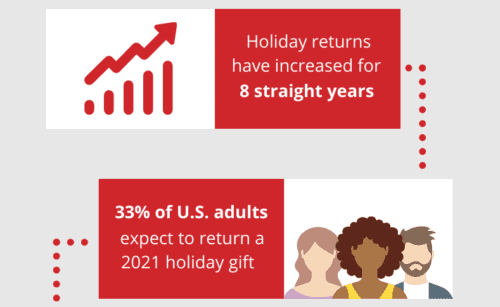Inventory forecasting is the most important way to protect your cash flow and save time as an eCommerce business owner. This is the practice of tracking all products in your warehouse for their entire journey, from being sold and pending shipping to arriving at the customer’s home and possibly being sent back for a return.
It’s especially important for companies who sell multiple products on multiple platforms to embrace inventory forecasting. In this post, we take a look at why it’s so critical, how you do it, and our top tips for doing it right.
Why is inventory forecasting important?
To put it simply, you can’t sell what you don’t have. Also important: having too much of something that you can’t sell can be a costly mistake.
Inventory forecasting takes a look at multiple aspects of your business – such as sales velocity and supplier turn-around times – to give you the full picture of when you’ve reached the point where you need to replenish the supply of your product.
Beyond its primary purpose of ensuring you are purchasing the right amount of product at the right time, inventory forecasting helps other aspects of your business. From your financials to marketing planning, it’s important to have an inventory forecast so that everyone’s fingers are on the pulse on what’s selling and what’s not.
How do you forecast inventory?
While we recommend using an inventory software tool, inventory forecasting can also be accomplished with a spreadsheet. Depending on your method, the objective is to define how much product to order and when to order across the span of a year.
Key variables of an inventory forecast include:
- Lead time – How long a product takes to arrive once you order it.
- Safety stock – How much stock you need on-hand as a buffer. This is commonly reached by multiplying daily sales by maximum lead time (in days) minus average daily sales multiplied by average lead time.
- Reorder Point (ROP) – How much stock to purchase, commonly reached by multiplying daily average sales by lead time and adding safety stock.
7 Inventory Forecasting Tips
1. Use inventory management software
Using software allows you to utilize sophisticated modeling based on seasonality, existing inventory, sales projections, and financial information such as revenue and profit figures. This is a great way to get a leg up on the competition.
It’s common for small eCommerce businesses to start on spreadsheets because it’s easier and less overhead. However, as an eCommerce business grows, the need for inventory software management becomes more clear. Not sure where to start? As Red Stag suggests in a previously mentioned blog post, check out the options available on your platform or consider eCommerce favorites such as EasyStock and FutureMargin.
2. Make sure your bookkeeping is up-to-date
Current bookkeeping is essential to having a useful inventory forecast. You need to know how much cash is on-hand for ordering stock, not to mention how much marketing budget you have for running regular promotions. Whether you need to order new stock on the fly or move a large amount of product using a PPC campaign, having these budgets readily available is essential.
Solid accounting is so essential that your business could live or die by it. For example, if you’re a seller who’s experiencing record sales you may get a false sense of your cash flow. It’s also essential to know your customer acquisition costs and operational costs or you could be on the fast track to a business failure.
3. Account for seasonality
Not only do you want to literally account for seasonality and avoid selling snowshoes in July, you also will need to consider other trends specific to your industry. For example, if you sell office supplies it would help to know when your ideal client’s annual budget begins and ends.
One way to anticipate demand spikes is with demand forecasting, which aims to predict future inventory needs. There are several ways to do this, including looking into your past sales data to anticipate future sales behavior. If you’re a relatively new business, your method of forecasting is going to be different from a company that’s more established. Market research and tapping into your sales team for insights are other ways companies try to forecast their inventory.
4. Exclude any outlying events from your forecasts
When starting an inventory forecast, think about the past 12 months and note down things that happened which you don’t anticipate happening again. For example, if you panicked this year and launched an extremely generous Black Friday sale that you don’t intend on repeating, you will need to factor that into your forecast.
Another consideration, which we touched on in the previous item, is the age of your business. Being a new business in itself is an outlying event. As a result, it’s okay to rely on market research or make inferences about where economic trends will go. That said, where possible typically it’s best to go with the data you know and the data that’s bound to repeat itself year after year.
5. Customize your forecast to the product
Not all products sell at the same velocity at the same time of year. As much as possible, try to have separate inventory forecasts for individual products or product categories, which will have their own unique lead times, reorder points and safety stock.
Going back to the snowshoes example, it would be unwise to use the same inventory forecast for snowshoes and summer sandals. If you applied the same modeling on snowshoes that you did for summer sandals, it’s likely that you’ll be short on sandals in the summer and have a surplus in the winter.
6. If the product is new, consider the launch trend of similar products
Earlier in this post, we discussed how it’s okay to rely on market research and economic trends at the beginning of your business. However, what if you’re not a new business but are launching a new product? If you can, try to find data on a product you launched in the past that is similar to the new one.
For example, if you’re launching a new tennis shoe and have more than a year’s worth of sales data on running shoe sales, that’s better than having no data at all (or data on candy bars). Tennis shoes and running shoes are both likely to sell more when people are more likely to be outside. They also are both school activities that typically have their own seasonality within the context of the school calendar.
7. Anticipate the unexpected
While it’s important to plan for everything that can be planned for, inevitably there will be events that do not make it into your inventory forecast. This is why it’s important to always prepare for the future in terms of cash flow. While it may be tempting to move your operation to a new building, for example, if you’re one setback away from going in the red, you may want to reconsider.
In possibly the best example of the unexpected, let’s look at the pandemic within the context of the running shoe and tennis shoe example. On one hand, with school schedules being completely rearranged and families practicing social distancing, you may be tempted to sell fewer athletic shoes in general. However, on the other hand people in general are doing more activities outside because it’s safer. This is one case where you really couldn’t have planned your inventory to be exactly right.
Conclusion
Mastering inventory forecasting isn’t just good business, it can give you a leg up on the competition. Additionally, by gathering this information and checking on it regularly, you are going to have a deeper knowledge of how your business works, which is going to have a positive impact on other aspects of your day-to-day such as bookkeeping and marketing.
Author – Wayne Richard, Chief Operating Officer at Bean Ninjas
Wayne is a management accountant who forged a 15-year career with tech heavyweight Hewlett Packard before starting his own cloud accounting firm in Tucson, Arizona. Fate (and the Internet) brought him to discover Bean Ninjas via a blog post. Two years later and Wayne’s involvement with Bean Ninjas had grown from a blog comment to contractor to equity partner.
When Wayne isn’t managing a global team and equipping entrepreneurs with the financial tools they need to enjoy business success and lifestyle freedom, he’s being an everyday superhero to his wife and five children.Wayne is Bean Ninjas resident e-commerce expert.
Website: https://beanninjas.com/











